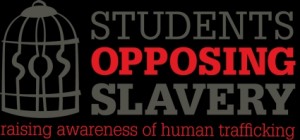Human Trafficking In America’s Schools
From the Safe Supportive Learning Department of the Department of Education:
 Human trafficking is modern slavery. It involves exploiting a person through force, fraud, or coercion for the purpose of forced labor, commercial sex, or both. Victims of human trafficking include men, women, boys, girls, and transgender individuals lured by the promise of a better life in the United States and adults and children who were born and raised in the United States.
Human trafficking is modern slavery. It involves exploiting a person through force, fraud, or coercion for the purpose of forced labor, commercial sex, or both. Victims of human trafficking include men, women, boys, girls, and transgender individuals lured by the promise of a better life in the United States and adults and children who were born and raised in the United States.
The International Labour Organization estimated, in 2012, that children represented 26 percent (or 5.5 million) of the 20.9 million victims worldwide.1 Both U.S. citizen and foreign national children are trafficked for sex and labor in the United States.2 In fact, many child victims of human trafficking are students in the American school system. School administrators and staff need to be aware that cases of child trafficking are being reported in communities throughout the nation. No community—urban, rural, or suburban—school, socioeconomic group, or student demographic is immune.
“Our fight against human trafficking is one of the great human rights causes of our time, and the United States will continue to lead it—in partnership with you. The change we seek will not come easy, but we can draw strength from the movements of the past. For we know that every life saved—in the words of that great Proclamation—is ‘an act of justice,’ worthy of ‘the considerate judgment of mankind, and the gracious favor of Almighty God.’” –President Barack Obama, September 25, 2012
Few crimes are more abhorrent than child trafficking, and few crimes are more challenging for communities to recognize and address. For many people, the reality of trafficking in their community is difficult to comprehend, let alone confront. For educators and school personnel, the reality of these crimes and the severity of their impact are cause for a call to action.
Schools can and should be safe havens for students, and even more so for some students whose lives are otherwise characterized by instability and lack of safety or security. In these cases, school personnel are uniquely well positioned to identify and report suspected abuse and connect students to services—actions that can prevent trafficking and even save lives. Everyone who is part of the school community—administrators, teachers, bus drivers, maintenance personnel, food service staff, resource officers, and other school community members—has the potential to be an advocate for child victims of human trafficking, but, first, school community members must learn the indicators of the crime, its warning signs, and how to respond when a student is an apparent victim.
 Though they play a crucial role, school personnel cannot, and should not, address these complex issues alone. Effectively responding to child trafficking demands increased awareness and a clearly defined course of action, supported by collaboration with child protective services, law enforcement, social services, and community-based service providers. This guide was developed to help school officials
Though they play a crucial role, school personnel cannot, and should not, address these complex issues alone. Effectively responding to child trafficking demands increased awareness and a clearly defined course of action, supported by collaboration with child protective services, law enforcement, social services, and community-based service providers. This guide was developed to help school officials
- understand how human trafficking impacts schools
- recognize the indicators of possible child trafficking
- develop policies, protocols, and partnerships to address and prevent the exploitation of children
NEST hopes teachers and school social workers will take time to review this site, attend some of the many events, and become familiar with the work that the Department of Education (DOE) is doing to prevent human trafficking. We can work backwards by bringing restoration to current victims and then work forward by working to prevent the next generation from this egregious crime. In this, we can eradicate modern day slavery.
Join NEST on August 11th at 4:00 EST for the monthly educators meetup call where you will hear from Eve Birge about the many program DOE has to offer teachers in America’s schools.

Got something to say?